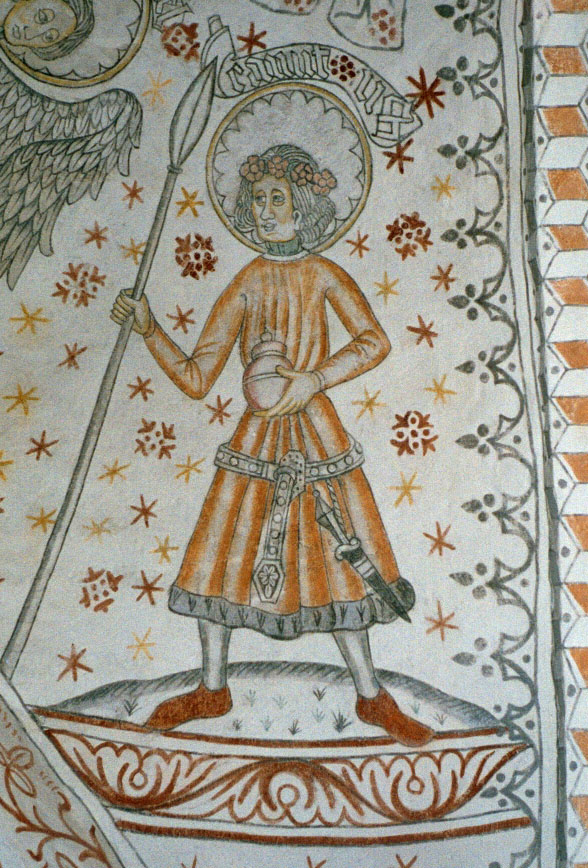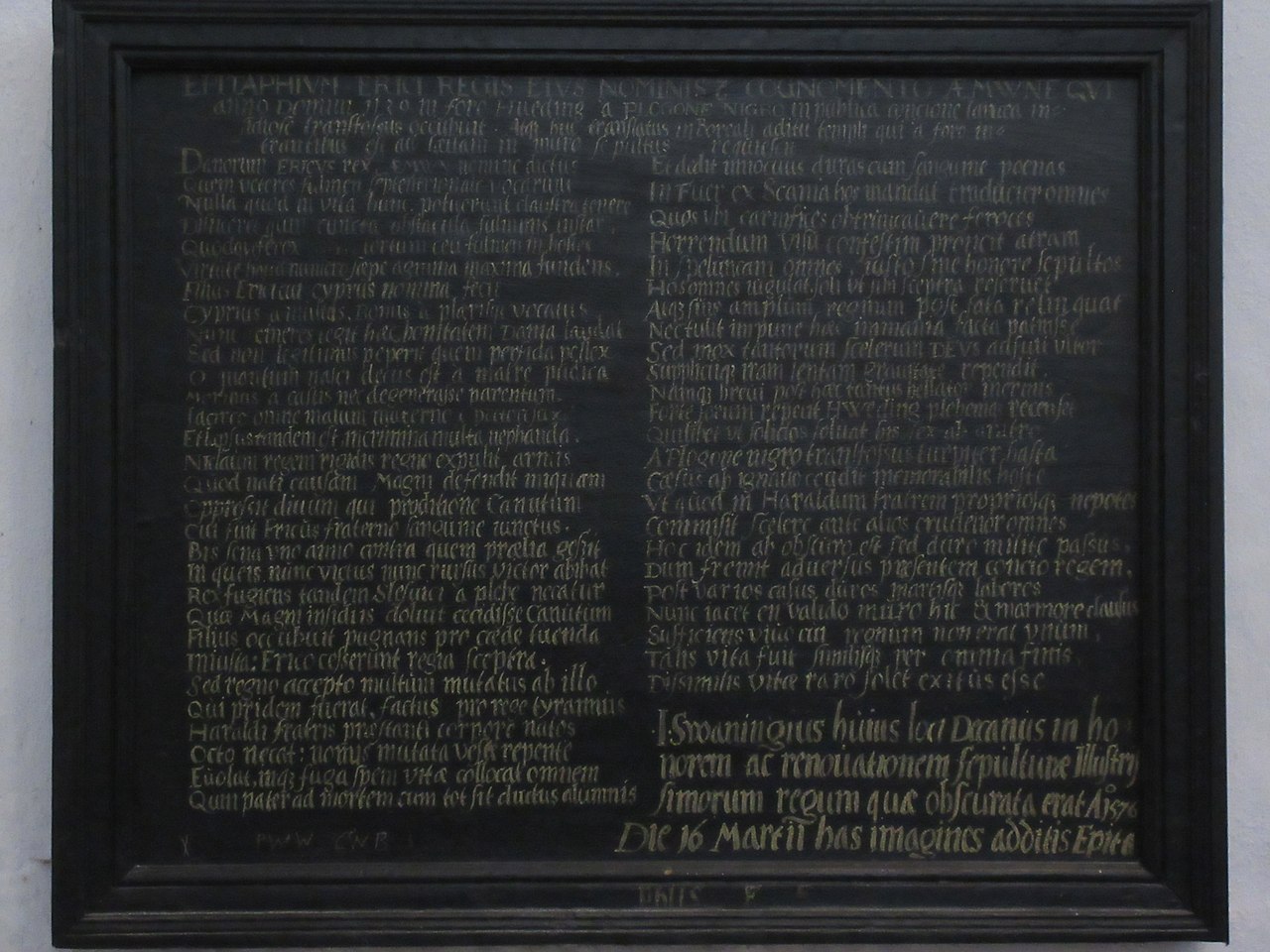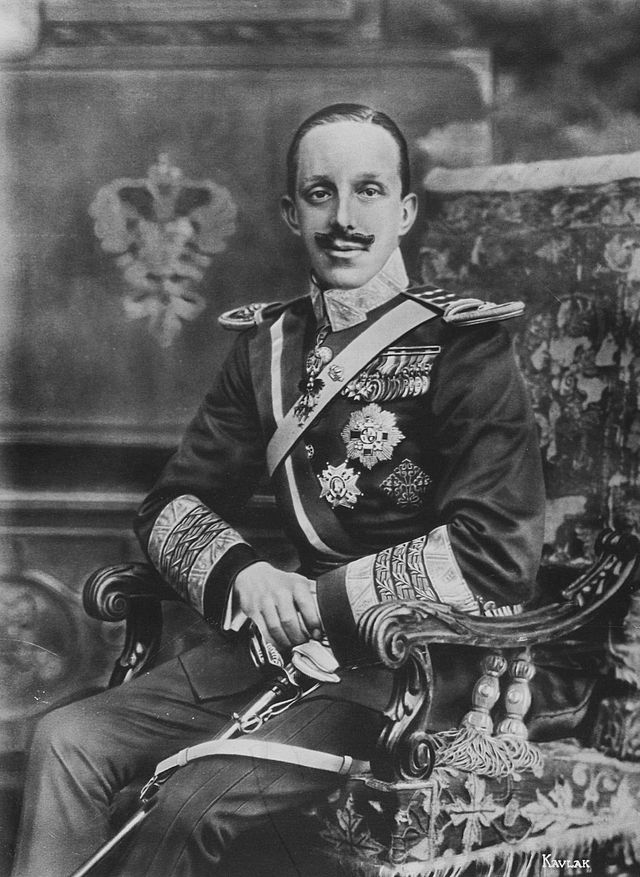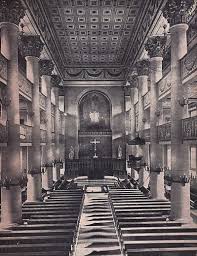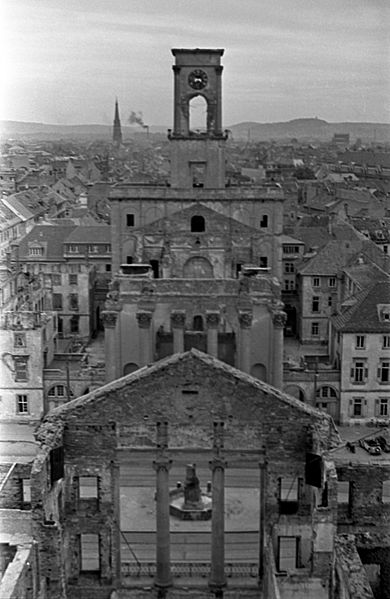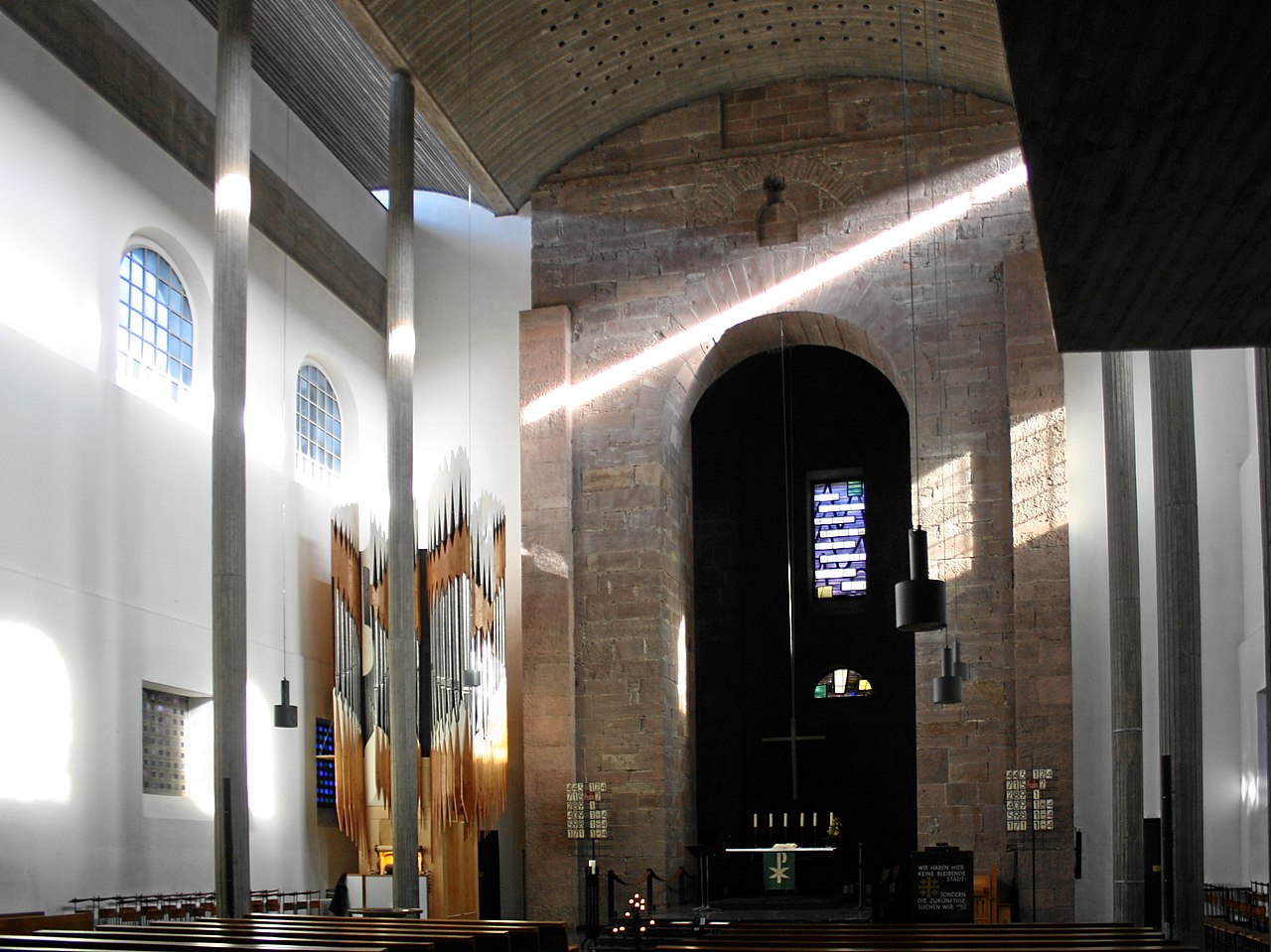© Unofficial Royalty 2025

Marguerite of Valois, Queen of France; Credit – Wikipedia
May 14, 1553 – Birth of Marguerite de Valois, Queen of France, daughter of King Henri II of France and Catherine de’ Medici, first wife of King Henri IV of France, at Château de Saint-Germain-en-Laye in France
Marguerite was the daughter of King Henri II of France and Catherine de’ Medici. In 1572, Marguerite married King Henri III of Navarre, later King Henri IV of France, the first king of the House of Bourbon. Just days after the wedding, the St. Bartholomew’s Day massacre, in which thousands of French Protestant Huguenots were killed, took place. Marguerite is alleged to have hidden several prominent Huguenots, as well as her new husband, to keep them safe from certain death. When her brother, King Henri III, died without an heir, the throne passed to Marguerite’s husband, the senior agnatic heir of King Louis IX of France. Henri IV needed a male heir, and his marriage to Marguerite had produced no children. He began negotiations with Marguerite to have their marriage annulled. After several years, the marriage was formally dissolved at the end of 1599. Marguerite retained her title as Queen of France. She died on March 27, 1615, aged 61.
Unofficial Royalty: Marguerite de Valois, Queen of France
May 14, 1610 – Assassination of King Henri IV of France by Francois Ravillac, a fanatical monk, on the Rue de Ferronnerie in Paris, France; buried at the Basilica of St. Denis in Saint-Denis, now a northern suburb of Paris, France
King Henri IV of France was the first French king of the House of Bourbon. He was the son of Queen Jeanne III of Navarre and Antoine de Bourbon, Duke de Vendôme. Although he was baptized in the Catholic Church, Henri was raised as a Protestant. Upon his mother’s death in 1572, Henri took the throne as King Henri III of Navarre. Two months later, he married Marguerite of Valois, the daughter of King Henri II of France. In 1584, Henri became the heir-presumptive to the French throne, as the last heir to King Henri III of France had died. Henri was the senior agnatic descendant of King Louis IX, and therefore the rightful heir. When King Henri III of France was assassinated in 1589, King Henri III of Navarre, as the heir-presumptive, became King Henri IV of France. In a loveless and childless marriage, and knowing that he needed an heir, Henri began negotiations to end his first marriage to Marguerite of Valois. In 1600, Henri married Marie de’ Medici and the couple had six children. In 1610, Henri IV was stabbed to death while his carriage was traveling through Paris.
Unofficial Royalty: Assassination of King Henri IV of France
Unofficial Royalty: King Henri IV of France
May 14, 1643 – Death of King Louis XIII of France in Paris; buried at the Basilica of St. Denis in Saint-Denis, now a northern suburb of Paris, France
Louis XIII became King of France at the age of eight upon the assassination of his father, King Henri IV of France. His mother Marie de’ Medici was appointed Regent. In 1615, Louis married Anne of Austria. They had two sons, King Louis XIV and Philippe I, Duke of Orléans. Although best associated with later generations of French monarchs, the Palace of Versailles has its origins with Louis XIII. Having gone on several hunting trips in the area, King Louis XIII ordered the construction of a hunting lodge in 1624. Several years later, he acquired the surrounding land and began to enlarge the building. It was under his son’s reign that the small hunting lodge was transformed into a grand palace, and became the seat of the French monarchy. After several weeks of intense illness, King Louis XIII died in Paris on May 14, 1643. Ironically, it was 33 years earlier on the same day that his own father had died. Just like his father, Louis left behind a very young son, not yet five years old, to succeed him on the French throne.
Unofficial Royalty: King Louis XIII of France
May 14, 1666 – Birth of Vittorio Amedeo II, King of Sardinia in Turin, Duchy of Savoy, now in Italy
Vittorio Amedeo II reigned as King of Sardinia from 1720 – 1730, but he had also reigned as King of Sicily from 1713 – 1720, and was Duke of Savoy from the death of his father in 1675 until his abdication in 1730. He married Anne Marie d’Orléans, the daughter of King Louis XIV of France’s only sibling Philippe, Duke of Orléans and his first wife Henrietta of England. They had six children. In 1730, two years after the death of his wife, Vittorio Amedeo privately and morganatically married Anna Canalis di Cumiana had been his mistress when she was a lady-in-waiting to Vittoria Amedeo’s mother. When Vittorio Amedeo announced his marriage to the court, he also abdicated and retired from the royal court. His son succeeded him as Carlo Emanuele III, King of Sardinia. On February 5, 1732, Vittorio Amedeo suffered a stroke, and his health drastically deteriorated. He asked to move to the Castle of Moncalieri near Turin and was transported there on a litter guarded by a company of soldiers. He died there at the age of 66.
Unofficial Royalty: Vittorio Amedeo II, King of Sardinia
May 14, 1710 – Birth of King Adolf Fredrik of Sweden, born Prince Adolf Friedrich of Holstein-Gottorp, at Gottorp Castle in Gottorp, Duchy of Schleswig now the city of Schleswig, Schleswig-Holstein, Germany
The first Swedish king of the House of Holstein-Gottorp, Adolf Frederik was born Prince Adolf Friedrich of Holstein-Gottorp. In 1743, after the Russo-Swedish War ended in Sweden’s defeat, negotiations were held with Empress Elizabeth of Russia. She agreed to restore part of Finland to Sweden if her heir’s uncle Adolf Friedrich of Holstein-Gottorp was made heir to the childless King Frederik I of Sweden. Empress Elizabeth’s heir was Karl Peter Ulrich, Duke of Holstein-Gottorp (the ill-fated future Peter III, Emperor of All Russia), the only child of Elizabeth’s deceased sister. Thereafter, Adolf Friedrich was known by the Swedish version of his name, Adolf Frederik. In 1744, Adolf Frederik married Louisa Ulrika of Prussia, and the couple had four children,n including two Kings of Sweden. Upon the death of King Frederik I of Sweden in 1751, Adolf Frederik succeeded to the Swedish throne. During his twenty-year reign, Adolf Fredrik had no real power. The Riksdag (Swedish Parliament) held the power. Adolf Fredrik tried to change this twice, unsuccessfully. At the age of 60, King Adolf Fredrik died on February 12, 1771, after eating an extremely large meal and then suffering a stroke. In Sweden, he is remembered as “the king who ate himself to death.”
Unofficial Royalty: King Adolf Fredrik of Sweden
May 14, 1759 – Birth of Prince Alois I of Liechtenstein in Vienna, Austria
Full name: Aloys Josef Johannes Nepomuk Melchior
Upon the death of his father Franz Josef I, Prince of Liechtenstein in 1781, 22-year-old Alois became the reigning Prince of Liechtenstein. In 1783, Alois married 15-year-old Karoline von Manderscheid-Blankenheim. Although the couple had no children, Karoline had two illegitimate children with her long-time lover Franz von Langendonck, a captain in the Imperial Austrian Army. Alois did much to improve the administration and management of his estates. He introduced modern production methods on his estates, experimented with breeding, and imported numerous useful and ornamental plants for economic reasons and botanical interests. Alois was passionate about books and continued to expand the princely library by purchasing extensive collections. Alois I died on March 24, 1805, aged 45.
Unofficial Royalty: Prince Alois I of Liechtenstein
May 14, 1818 – Death of Charlotte Georgine of Mecklenburg-Strelitz, Duchess of Saxe-Hildburghausen, wife of the future Friedrich, Duke of Saxe-Altenburg, in Hildburghausen, Duchy of Saxe-Hildburghausen, now in Thuringia, Germany; initially buried in the Hildburghausen Castle Church in the Duchy of Saxe-Hildburghausen, now in Thuringia, Germany, her remains were moved to the Hildburghausen Stadtfriedhof in 1819, the first burial in the new cemetery
Charlotte was the eldest child of Carl II, Grand Duke of Mecklenburg-Strelitz and Princess Friederike of Hesse-Darmstadt. Her paternal aunt was Charlotte of Mecklenburg-Strelitz, the wife of King George III of the United Kingdom. In 1785, Charlotte married Friedrich, then the Duke of Saxe-Hildburghausen. The marriage was unhappy from the beginning, and Friedrich mostly ignored his wife, who was far more intelligent than he was. Despite this, the couple had twelve children. Despite her husband’s disinterest, Charlotte became much loved by the people of Saxe-Hildburghausen. She gave very generously to causes and charities that helped the poor and funded numerous programs that provided education and training to the less fortunate.
Unofficial Royalty: Charlotte Georgine of Mecklenburg-Strelitz, Duchess of Saxe-Hildburghausen
May 14, 1819 – Death of Kamehameha I the Great, King of the Hawaiian Islands at Kamakahonu, the compound he built in Kailua-Kona on the island of Hawaii; his final resting place is unknown (see below)
The Kingdom of Hawaii was formed in 1795, when the warrior chief Kamehameha the Great of the independent island of Hawaii, conquered the independent islands of Oahu, Maui, Molokai, and Lanai, and unified them under one government and ruled as Kamehameha I, King of the Hawaiian Islands. In 1810, the whole Hawaiian archipelago became unified when Kauai and Niihau voluntarily joined the Kingdom of Hawaii. After his death, Kamehameha I’s body was hidden by his trusted friends Hoapili and Hoʻolulu in the ancient custom called hūnākele (to hide in secret). The mana, or power of a person, was considered to be sacred and his body was buried in a hidden location because of his mana.
Unofficial Royalty: Kamehameha I the Great, King of the Hawaiian Islands
May 14, 1854 – Birth of Grand Duchess Maria Pavlovna of Russia, wife of Grand Duke Vladimir Alexandrovich of Russia, born Marie of Mecklenburg-Schwerin at Schloss Ludwigslust in the Grand Duchy of Mecklenburg-Schwerin, now in Mecklenburg-Vorpommern, Germany
Full name: Marie Alexandrine Elisabeth Eleonore
In 1874, Maria married Grand Duke Vladimir Alexandrovich of Russia, the second surviving son of Alexander II, Emperor of All Russia. The couple had five children. On February 17, 1909, 61-year-old Grand Duke Vladimir Alexandrovich died suddenly after suffering a major cerebral hemorrhage. Maria was one of the Romanovs who escaped Russia after the Russian Revolution. However, she was hesitant to leave because she still hoped that her own eldest son Kirill would one day be Emperor of All Russia. On February 13, 1920, Maria Pavlovna, her son Andrei, his mistress, the famous ballerina Matilde Kschessinska, and her son Vladimir boarded an Italian ship in the direction of Venice, Italy. They made their way from Venice to Switzerland and then to France, where Maria Pavlovna’s health failed and she died six months later. Maria Pavlovna had a passion for jewelry, and her collection was renowned. She was one of the few members of the Romanov family who managed to get her jewelry out of Russia. British art dealer and diplomatic courier Albert Stopford, a family friend, rescued the jewelry from her Vladimir Palace safe and smuggled the jewels out of Russia to England. After Maria Pavlovna’s death, the jewelry was sold by her children to support their lives in exile.
Unofficial Royalty: Marie of Mecklenburg-Schwerin, Grand Duchess Maria Pavlovna of Russia
May 14, 1859 – Birth of Queen Natalija of Serbia, wife of King Milan I of Serbia, born Natalija Keschko in Florence, then in the Grand Duchy of Tuscany, now in Italy
In 1875, Natalija married her second cousin, Milan Obrenović IV, Prince of Serbia. In 1882, the Principality of Serbia was elevated to the Kingdom of Serbia and Milan and Natalija became the first King and Queen of Serbia. The marriage was unsuccessful, but Natalija and Milan had two sons, and only the eldest survived. After the horrendous assassination of her son Alexander I, King of Serbia and his wife in 1903, Natalija was the only member of the Obrenović dynasty. She donated the Obrenović inheritance to the University of Belgrade and churches and monasteries in Serbia. Natalija became a nun and died at the age of 81 at the Monastery of Saint-Denis near Paris, France.
Unofficial Royalty: Natalija Keschko, Queen of Serbia
May 14, 1902 – Birth of Archduke Gottfried of Austria in Linz, Austria
Archduke Gottfried of Austria was the Pretender to the former Grand Ducal throne of Tuscany from 1948 until he died in 1984.
Unofficial Royalty: Archduke Gottfried of Austria
May 14, 1912 – Death of King Frederik VIII of Denmark on a park bench in Hamburg, Kingdom of Prussia, now in Germany; buried at Roskilde Cathedral in Roskilde, Denmark
Frederik VIII and his wife Louise of Sweden are the ancestors of several royal families besides the Danish royal family. Their son Carl was elected King of Norway and reigned as King Haakon VII. Their daughter Ingeborg was the mother of Märtha, who married her first cousin, King Haakon VII of Norway. However, Märtha died before her husband became king. Ingeborg was also the mother of Astrid, the first wife of Leopold III, King of the Belgians. Astrid’s daughter Josephine-Charlotte married Grand Duke Jean of Luxembourg. Returning to Copenhagen after a trip to Nice, France, Frederik made a stop-over in Hamburg, Kingdom of Prussia, now in Germany, on May 13, 1912. He registered at the Hamburger Hof Hotel using the pseudonym Count Kronborg. On the following evening, May 14, 1912, Frederik left the hotel alone for an evening stroll. When he was not found in his hotel room the next morning, a discreet search revealed that the body of a well-dressed unknown gentleman had been found on a park bench. The body, which had been moved to the city morgue a little before midnight, was that of the 68-year-old King Frederik, who had died of a heart attack.
Unofficial Royalty: King Frederik VIII of Denmark
May 14, 1922 – Death of Lady Mary Victoria Hamilton, first wife of Prince Albert I of Monaco, in Budapest, Hungary; buried with her second husband in his family mausoleum on the grounds of the Festetics Palace in Keszthely, Hungary
Besides having an American mother, Prince Albert II of Monaco has a Scottish great-grandmother, and not on his mother’s side, but on his father’s side. Lady Mary Victoria Hamilton was the daughter of William Alexander Anthony Archibald Hamilton, 11th Duke of Hamilton and Princess Marie Amelie of Baden. French Emperor Napoléon III suggested a match between the future Prince Albert I of Monaco and Lady Mary Victoria. The couple married in 1869 but the marriage was unsuccessful. Mary Victoria did not like her husband and did not like Monaco and the Mediterranean, which was so unlike her native Scotland. 19-year-old, pregnant Mary Victoria left Monaco with her mother and headed to her mother’s family home in the Grand Duchy of Baden. It was in Baden that Mary Victoria gave birth to the future Prince Louis II of Monaco in 1870. Mary Victoria and Albert never reconciled. Their marriage was annulled by the Roman Catholic Church in 1880 and civilly dissolved the same year by Prince Charles III of Monaco. Their son Prince Louis was raised in Baden by his maternal grandmother and did not see his father until he was 11-years-old. Mary Victoria married a second time in 1880 to Count Tassilo Festetics de Tolna, a Hungarian noble, and the couple had four children. Mary Victoria’s second marriage was a happy one and lasted over 40 years until the death of her second husband.
Unofficial Royalty: Lady Mary Victoria Hamilton, Princess of Monaco
May 14, 1953 – Birth of King Norodom Sihamoni of Cambodia in Phnom Penh, Cambodia
Norodom Sihamoni is the current King of Cambodia. Citing his poor health, Sihamoni’s father, King Sihanouk, announced his abdication in October 2004. Unlike most monarchies, the succession to the Cambodian throne is not hereditary. The monarch is elected for life by the Royal Council of the Throne, consisting of members of the royal family, government officials, and religious figures. Upon his father’s abdication, Sihamoni was unanimously elected as the next King of Cambodia on October 14, 2004. He is unmarried and has no children.
Unofficial Royalty: King Norodom Sihamoni of Cambodia
May 14, 1959 – Death of Maria Antonia of Portugal, Duchess of Parma, 2nd wife of Roberto I, Duke of Parma, at Berg Castle, Colmar-Berg, Luxembourg; buried at the Puchheim Castle Church in Attnang-Puchheim, Austria
Maria Antonia was the youngest of the seven children of the deposed Miguel I, King of Portugal. In 1884, she married Roberto I, titular Duke of Parma, as his second wife. Maria Antonia and Roberto had twelve children, including Zita, who married Karl I, the last Emperor of Austria, and Feli,x who married Grand Duchess Charlotte of Luxembourg. Maria Antonia’s husband died in 1907. After World War I, when her son-in-law Karl I, Emperor of Austria lost his throne and had to go into exile, Maria Antonia accompanied her daughter Zita, Karl, and their large family. After World War II ended, Maria Antonia lived at Berg Castle in Colmar-Berg, Grand Duchy of Luxembourg. Her niece, the daughter of her sister Maria Ana, was Grand Duchess Charlotte of Luxembourg, the wife of Maria Antonia’s son Prince Felix of Bourbon-Parma. In 1952, Maria Antonia celebrated her 90th birthday at Berg Castle. She survived her husband Roberto by 52 years, dying on May 14, 1959, aged 96, at Berg Castle in Colmar-Berg, Grand Duchy of Luxembourg.
Unofficial Royalty: Maria Antonia of Portugal, Duchess of Parma
May 14, 1962 – Wedding of King Juan Carlos of Spain and Princess Sofia of Greece in a Roman Catholic ceremony at the Cathedral of St. Denis in Athens, Greece, and then in a Greek Orthodox ceremony at the Metropolitan Orthodox Cathedral of the Virgin Mary also in Athens
As Juan Carlos and Sophia were of different faiths, special consent was needed from both churches for the marriage. A Greek Orthodox ceremony was required for the couple to be married in Greece, but the Spanish would likely not accept a future royal couple that had not been married according to Roman Catholic rites. After some discussion, an agreement was made to marry the couple in dual Roman Catholic and Greek Orthodox ceremonies. The Catholic service would be held at the Cathedral of St. Denis in Athens, Greece, while the Orthodox ceremony would take place at the Metropolitan Orthodox Cathedral of the Virgin Mary in Athens.
Unofficial Royalty: Wedding of Juan Carlos of Spain and Sofia of Greece
May 14, 2004 – Wedding of King Frederik X and Queen Mary of Denmark, at Copenhagen Cathedral (The Church of Our Lady) in Copenhagen, Denmark
Frederik, then Crown Prince of Denmark, and Mary met on September 16, 2000, during the Olympic Games in Sydney. A friend of Mary’s was meeting Bruno Gómez-Acebo (a nephew of King Juan Carlos) for dinner at the Slip Inn in Sydney and invited Mary and another friend to join them. Bruno also brought a few friends, including Prince Nikolaos of Greece and his cousin Crown Prince Frederik. Quickly, the two became very interested in each other. Over the next year, Frederik made many private trips to Australia to see Mary, and in 2001, she left Australia and moved first to Paris and then to Denmark. The engagement of Crown Prince Frederik and Miss Mary Donaldson was formally announced on October 8, 2003, following a meeting of the Council of State, at which Queen Margrethe II had given her formal consent to the marriage.
Unofficial Royalty: Wedding of King Frederik X and Mary Donaldson
This article is the intellectual property of Unofficial Royalty and is NOT TO BE COPIED, EDITED, OR POSTED IN ANY FORM ON ANOTHER WEBSITE under any circumstances. It is permissible to use a link that directs to Unofficial Royalty.
